This post will look at how our food is used, abused, manipulated and controlled by the Market forces of Capitalism that are administered through the Politics of Neoliberalism, the final piece in this series will explore what we can do in our own lives to regain control of this most vital human need. Everything that we need to live and survive as human beings is controlled, manipulated and exploited in the name of profit and so called growth, corporate business leaders and Capitalist Politicians are well aware of the fact that if we didn’t have the human basics that we would simply perish, and it is on this fact that they ruthlessly play their savage games on their psychopathic and greedy quest towards control and profit. 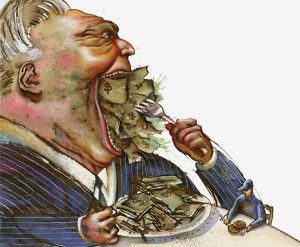
Dying of hunger in the modern super efficient world of high tech agriculture and capitalism
Whilst levels of obesity in the West are reaching chronic levels Every year Millions of men, women and children die needlessly due to being denied access to food, what makes this more disgusting is the fact that according to the UN around a third or more of the global food supply is thrown away on a yearly basis, this food could easily be relocated to the starving people who need it, but instead is thrown away as part of profit and loss tax scams where companies benefit financially, whilst hungry people die.
The facts: food, starvation and malnutrition
- 870 million people do not have enough to eat and 98 percent of them live in developing countries. (Source: FAO news release,2012)
- Asia and Oceania are home to around 564 million of the world’s hungry people.
(Source: FAO news release,2012) - Women make up a little over half of the world’s population, but they account for over 60 percent of the world’s hungry.
(Source: Strengthening efforts to eradicate hunger…, ECOSOC, 2007) - Almost 15% of the population among developing countries is undernourished, or about 850 million people.
(Source: FAO news release, 2012)
- Undernutrition contributes to five million deaths of children under five each year in developing countries.
(Source: Under five deaths by cause, UNICEF, 2006) - One out of four children – roughly 146 million – in developing countries is underweight
(Source: The State of the World’s Children, UNICEF, 2007) - More than 70 percent of the world’s underweight children (aged five or less) live in just 10 countries, with more than 50 per cent located in South Asia alone;
(Source: Progress for Children: A Report Card on Nutrition, UNICEF, 2006) - 10.9 million children under five die in developing countries each year. Malnutrition and hunger-related diseases cause 60 percent of the deaths;
(Source: The State of the World’s Children, UNICEF, 2007)
Food as the ultimate commodity
Banks are earning huge profits from betting on food prices in unregulated financial markets. This creates instability and pushes up global food prices, making poor families around the world go hungry and forcing millions into deeper poverty.
The World Development Movement
For the Capitalist there is no greater commodity than those that keep us alive, food being the most important resource without which we would all simply die. At present there is enough land in the world to easily provide food for every single person on the planet. There are a few different reasons why this food is getting to the people who need it, our changing climate is having an effect on our ability to grow enough food to feed everyone; however it is market forces and the control of our food supply that is really keeping people hungry.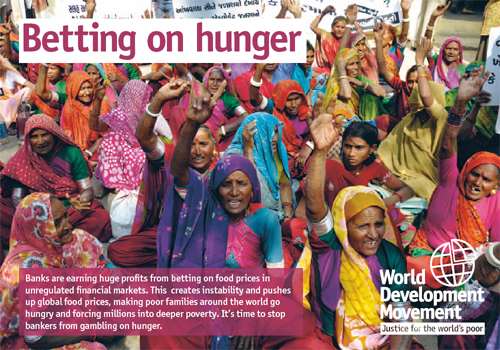
Gambling and speculating on our food
Food has become the target for Stock Market speculators to earn a quick buck from, Markets have little in the way of rules and regulations and this allows the morally repugnant practice of gambling on the price of food staples, such as Wheat, Rice, and Soya. It has been estimated that Barclays Bank alone makes up to £340 million a year from betting, or speculating, on food prices. In the last five years, the amount of financial speculation on food has nearly doubled, from $65 billion to $126 billion. According to the World development movement, the effect of traders gambling on the price of our food staples has the following knock on effects:
- Increased hunger as food becomes unaffordable.
- Malnutrition as smaller quantities of expensive foods such as fruit and vegetables are eaten in order to afford staple foods
- Increased burden on women to earn more money by taking up risky employment such as sex work or domestic work.
- Households using up savings, going into debt or selling assets to pay for food.
- Families unable to afford healthcare and education as more of their income is needed to buy basic food.
Food has always been used as social control throughout history, our times are no exception to this rule. If you cut off the food supply to a nation or community they are at the mercy of those who control and have power over food. In the US members of the activist group ‘Food Not Bombs’ have been arrested and harassed by Police for what amounts to nothing more than feeding those who have no food to feed themselves.
Food as social control
Food Not Bombs
The hostility shown towards groups like Food Not Bombs and others for simply feeding the hungry is astonishing, in the Country like the US where Neoliberal and free market thought dominate the electoral political system, they simply cannot comprehend the idea that somebody should eat without have worked and paid for it. But Neoliberalism and market forces have destroyed the jobs market in the US yet there is still a hostility towards feeding the poor, despite the fact that capitalism has failed to provide the jobs that people need in order to work for and pay for the weekly intake of food.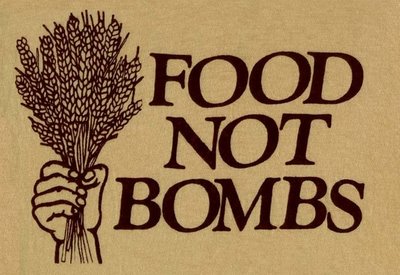
Healthy food priced out of reach
wholesome and cleanly produced healthy food is out of reach to many, particularly people on low income and unemployed people due its high price. The problem lies with the fact that Industrial agriculture is subsidized with tax payers money, this coupled with the low buying prices that are forced onto farmers and producers by supermarkets means that industrially produced food remains fairly cheap, but there are health issues with food that has been produced in this way, including the effects of eating produce that is sprayed with toxic pesticides and insecticides. One of the ways to combat the risks of ingesting food that has been treated with these toxic agrochemicals is to simply not buy it and choose to buy organically grown produce instead, however, as I briefly mentioned at the start of this piece cleanly grown food is expensive, and it isn’t expensive because organic producers are out to make a quick buck like their industrial counterparts, it is expensive because organic producers receive very little in the way of subsidies when they grow their produce, by the time organic produce has made it to the supermarket shelves, yet more has been added to the price of this produce due to the supermarkets themselves commodifying and ramping up the price of organically grown food to give it an air of ‘super-healthy exclusiveness’
Big food, the Major players
During the last fifty years or so our food supply has become concentrated in the hands of big agribusiness . In terms of the companies and corporations that dominate and control the supply of food in terms of its production, processing and packaging, within the US we have a more extreme situation where the following companies have a huge slice of the food market.
Big food
Supplying the worlds rapidly growing population has become very big business, and this business is increasingly owned and controlled by a handful of companies that operate across a diverse spectrum of areas within food production and are global in terms of their processing setups and market reach. Here is a list of some of the major food suppliers in the US, many of these companies also have a great deal of power and influence outside of the US markets.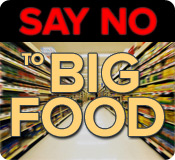
Tyson Foods, Inc – Tyson is the world’s largest processor and marketer of chicken and red-meat products, such is the huge turnover of Tysons that they kills 6,000,000 chickens, 30,000 cattle, and 48,000 pigs every day of the week
Smithfield Foods, Inc – This 8 billion doller a year company process pork in a global basis, with setups in the US, Brazil, China, the UK and France. Smithfield Farms kills 80,300 pigs and 7,850 cattle every day..
Swift & Company – Swift are another 8 billion dollars a year company who have considerable sway within the meat market due to them now controlling 54% of ConAgra’s live animal operations
Hormel Foods Corporation – Hormel are a US based global entity that works in all areas of meat production and have processing plants throughout Europe and Asia
Sanderson Farms, Inc. –Sandersons are the largest of the US poultry only producers, they supply the US poultry market with over a billion products on a yearly basis.
Cargill, Inc – Cargill boasts an annual evenue of 60 billions dollars and employes people in 61 countries, they are involved in all aspects of meat production, Cargill is the largest private cooperation in the US
ConAgra Foods, Inc – A 20 billion dollar a year company and one of the largest packaged food companies in North America
Archer Daniels Midland Company – A 30 billion dollar a year company that operates in a wide and diverse area within the food production chain.
Time to act!
All of the above companies own a huge slice of the US food market, and are rapidly advancing and forcing their control on other countries outside of their US base. We cannot allow these companies to control our food supply any longer, their practices degrade eco-systems, force people into wage slavery, and ultimately they maintain a dominant grip on our most vital of human resources. The final piece in this series will look at the alternatives available to us as we strive to reclaim our food supply from the vast and faceless entities of big business.
The food fight back
Grow your own!
The most simple and direct way that we can fight back against the control of our food supply is by growing as much of our own as possible. Many people have gardens attached to the houses they live in, for those who don’t there are allotment plots, community growing projects, and in the UK in particular Landshare, where people can hook up with people who spare land on which others can grow food. 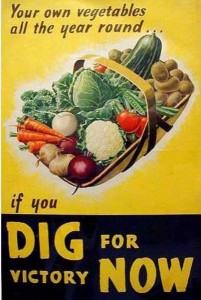 In the former Soviet Union a good deal of their food supply comes from small family run farms, smallholding and community growing projects, this has ensured that the former Soviet Union has an abundant and diverse food supply without all of the associated ecological degradation that is part of industrial agriculture
In the former Soviet Union a good deal of their food supply comes from small family run farms, smallholding and community growing projects, this has ensured that the former Soviet Union has an abundant and diverse food supply without all of the associated ecological degradation that is part of industrial agriculture
Food coops
Food cooperatives are springing up all over the place on an almost daily basis, these coops are fairly simple to set up, get a few of your Neighbours, friends and family together, organize yourselves into a cooperative, sign up with some wholesale food suppliers, pool your money together and bulk buy your produce. Food coops make Significant savings on organic and wholefood stuff when they make their purchases, and for low income families who cannot afford to buy price ramped supermarket organic produce the food coop offers a chance to families to be able to eat more healthily on their limited budgets.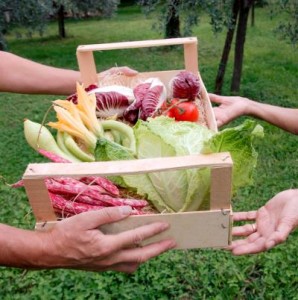
Community supported agriculture
Community supported agriculture (CSA) is a partnership between farmers and the local community, in which the responsibilities, risks and rewards of farming are shared. Benefits are enjoyed by all sides: farmers for instance can receive a more stable and secure income and closer connection with their community, and consumers can benefit by eating fresh healthy food, feeling more connected to the land where their food is grown and learning new skills.
Steve – Permanent Culture Now
